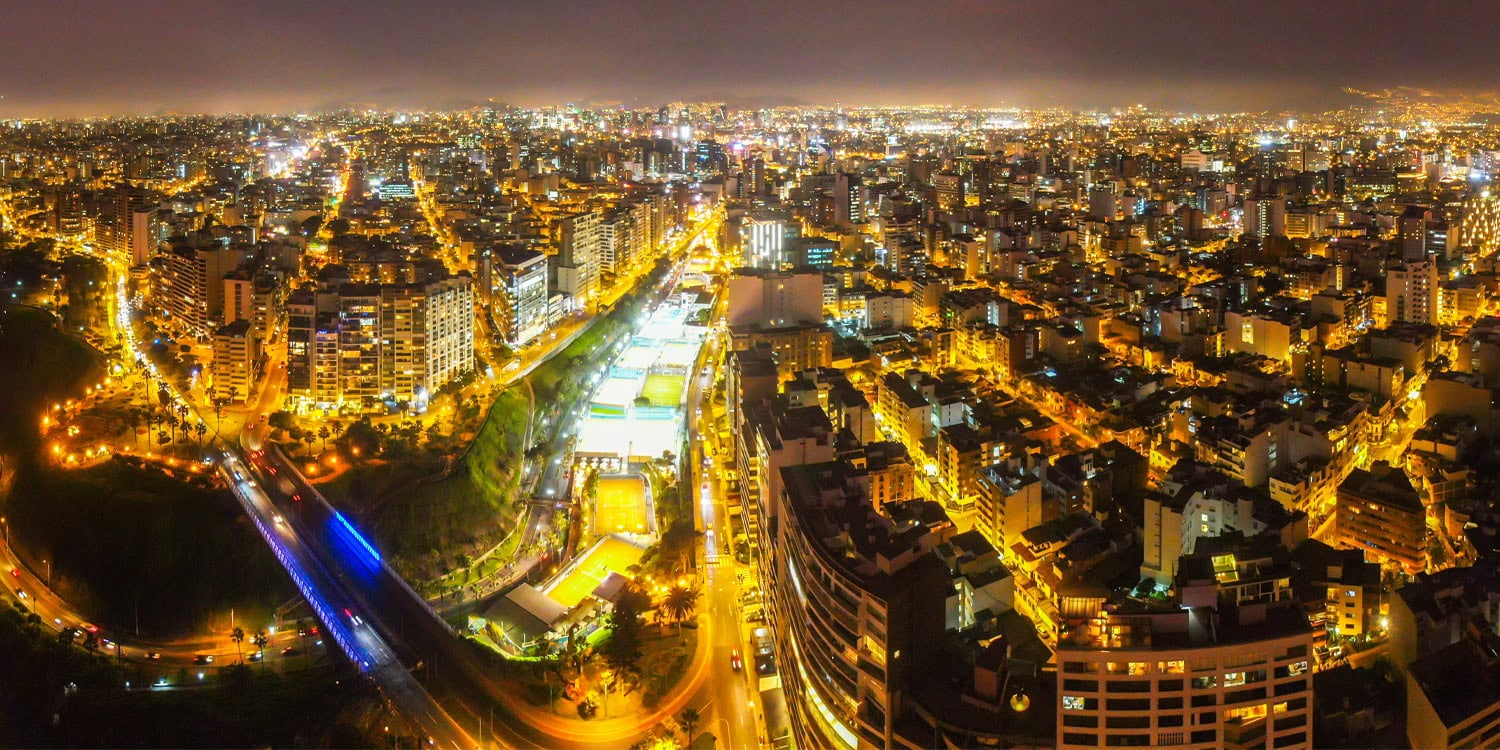A new study published in Frontiers in Neuroscience suggests that exposure to artificial light at night may contribute to an increased prevalence of Alzheimer’s disease, particularly among younger individuals. The researchers found a significant correlation between higher levels of outdoor light pollution and higher rates of Alzheimer’s disease across various regions in the United States. This connection was observed even after accounting for known risk factors, raising concerns about the role of artificial light in neurodegenerative diseases.
Alzheimer’s disease, a neurodegenerative disorder that affects memory and cognitive function, is a growing concern worldwide. With rates of Alzheimer’s disease rising and light pollution now affecting 80% of the global population, the researchers sought to investigate whether there could be a link between these two modern phenomena.
Artificial light at night has become a hallmark of urban life, providing convenience and safety. Yet, growing evidence shows that light exposure during nighttime disrupts the body’s natural circadian rhythms—the internal processes that regulate sleep and wake cycles. Circadian disruptions have been linked to health problems such as insomnia, obesity, depression, and even heart disease. Given that sleep disturbances are a known risk factor for Alzheimer’s disease, the research team wanted to explore whether excessive nighttime light exposure could play a role in its development.
Earlier studies have hinted at the possibility of a link between artificial light and cognitive decline. For instance, research in China and Italy indicated that populations exposed to higher levels of outdoor light at night experienced higher rates of dementia. However, no research had comprehensively examined the relationship between nighttime light exposure and Alzheimer’s disease specifically, particularly in the United States.
The research team analyzed Alzheimer’s disease prevalence across the contiguous United States, focusing on data from 2012 to 2018. They combined data on Alzheimer’s disease prevalence from Medicare records with satellite-based measurements of nighttime light intensity. The study covered both state and county levels, allowing for a detailed analysis of light pollution’s impact on local populations.
The researchers gathered their Alzheimer’s disease data from the Centers for Medicare and Medicaid Services (CMS), which tracks the prevalence of chronic conditions among older adults in the U.S. They also accounted for important factors that could influence Alzheimer’s rates, such as age, gender, race, and underlying health conditions like diabetes, heart disease, and obesity.
Nighttime light exposure data came from satellite images, which measured the intensity of outdoor artificial light in different regions. The researchers then compared Alzheimer’s disease prevalence in areas with the brightest nighttime light exposure to those with the darkest, looking for patterns and trends across the data.
To further ensure the accuracy of their findings, the team also performed a more localized analysis, focusing on counties within each state. This approach helped control for differences between urban and rural areas, where light pollution levels can vary dramatically.
The study’s results revealed a significant relationship between outdoor light pollution and Alzheimer’s disease prevalence. States and counties with higher levels of artificial light at night consistently had higher rates of Alzheimer’s disease. The researchers observed this connection across multiple age groups, including people under 65, an age group typically less associated with Alzheimer’s disease.
“Our research shows that there is an association in the U.S. between Alzheimer’s disease prevalence and exposure to light at night, particularly in those under the age of 65,” said lead investigator, Robin Voigt-Zuwala, an associate professor at Rush University Medical Center. “Nightly light pollution — a modifiable environmental factor — may influence risk for Alzheimer’s.”
When the researchers controlled for other risk factors—such as cardiovascular disease, diabetes, and obesity—they still found that light pollution was significantly linked to Alzheimer’s disease prevalence. Interestingly, the connection was particularly strong in younger populations, suggesting that younger individuals may be more sensitive to the effects of nighttime light exposure.
“Certain genotypes, which influence early-onset Alzheimer’s disease, impact the response to biological stressors which could account for increased vulnerability to the effects of nighttime light exposure,” Voigt-Zuwala explained. “Additionally, younger people are more likely to live in urban areas and have lifestyles that may increase exposure to light at night.”
At the state level, the analysis showed that regions with the highest average nighttime light intensity had significantly higher Alzheimer’s disease rates compared to areas with the lowest levels of light pollution. This pattern was consistent when the data was broken down year by year, indicating a robust and reliable trend.
Furthermore, the researchers found that the association between nighttime light exposure and Alzheimer’s disease was stronger than some other known risk factors, such as chronic kidney disease, heart failure, and depression. However, other conditions, such as atrial fibrillation and diabetes, had a greater impact on Alzheimer’s prevalence than light pollution.
The researchers also noted that certain populations, such as Native Americans, appeared to be more affected by light pollution than others, although the reasons for this were not entirely clear. Additional studies are needed to explore these differences further.
While the findings of this study provide evidence for a link between light pollution and Alzheimer’s disease, there are several limitations that should be addressed in future research.
First, the study relied on outdoor nighttime light data and did not account for indoor light exposure, which can also have a significant impact on sleep and circadian rhythms. With the increasing use of electronic devices that emit blue light—known to disrupt sleep—the influence of indoor light exposure on neurodegenerative diseases warrants further investigation.
Second, the data used in the study were drawn from Medicare records, which track older adults and individuals with certain disabilities. The study did not include data from individuals not covered by Medicare, such as younger populations or those enrolled in private health insurance plans. This limitation means that the findings may not be fully representative of the entire U.S. population.
Additionally, the study focused on Alzheimer’s disease prevalence rather than incidence. Prevalence reflects the total number of cases at a given time, while incidence tracks new cases over a period. Understanding how light pollution affects the development of Alzheimer’s disease over time would require studies that track individuals longitudinally, from exposure to the onset of symptoms.
Lastly, while the study shows a correlation between light pollution and Alzheimer’s disease, it does not establish a direct cause-and-effect relationship. Other environmental factors associated with urban living—such as air pollution, noise, or socioeconomic conditions—could also contribute to the higher rates of Alzheimer’s disease observed in areas with more light pollution.
The findings from this study underscore the potential health risks of artificial light exposure at night, particularly for individuals at risk for Alzheimer’s disease. As light pollution continues to increase, especially in urban areas, understanding its effects on brain health is becoming more urgent.
Although the exact mechanisms by which light pollution might contribute to Alzheimer’s disease remain unclear, the researchers suggest that sleep disruption and circadian rhythm disturbances are likely involved. Disrupted sleep has been linked to a range of health problems, including cognitive decline, and artificial light at night is known to interfere with the body’s natural sleep-wake cycle.
“Awareness of the association should empower people – particularly those with risk factors for Alzheimer’s disease – to make easy lifestyle changes,” said Voigt-Zuwala. “Easy to implement changes include using blackout curtains or sleeping with eye masks. This is useful especially for those living in areas with high light pollution.”
The study, “Outdoor nighttime light exposure (light pollution) is associated with Alzheimer’s disease,” was authored by Robin M. Voigt, Bichun Ouyang, and Ali Keshavarzian.




